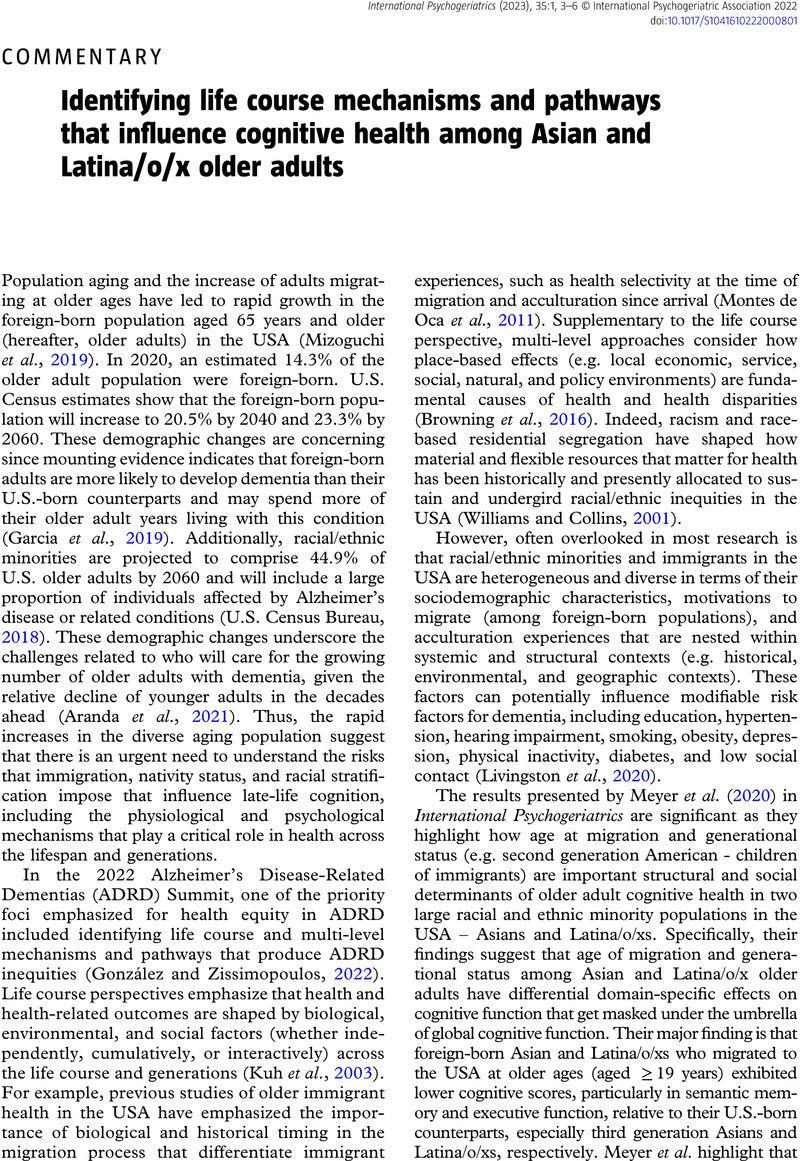Article contents
Identifying life course mechanisms and pathways that influence cognitive health among Asian and Latina/o/x older adults
Published online by Cambridge University Press: 13 September 2022
Abstract

- Type
- Commentary
- Information
- International Psychogeriatrics , Volume 35 , Special Issue 1: Issue Theme: Ageism, Dementia, and Culture , January 2023 , pp. 3 - 6
- Copyright
- © International Psychogeriatric Association 2022
References
- 3
- Cited by


